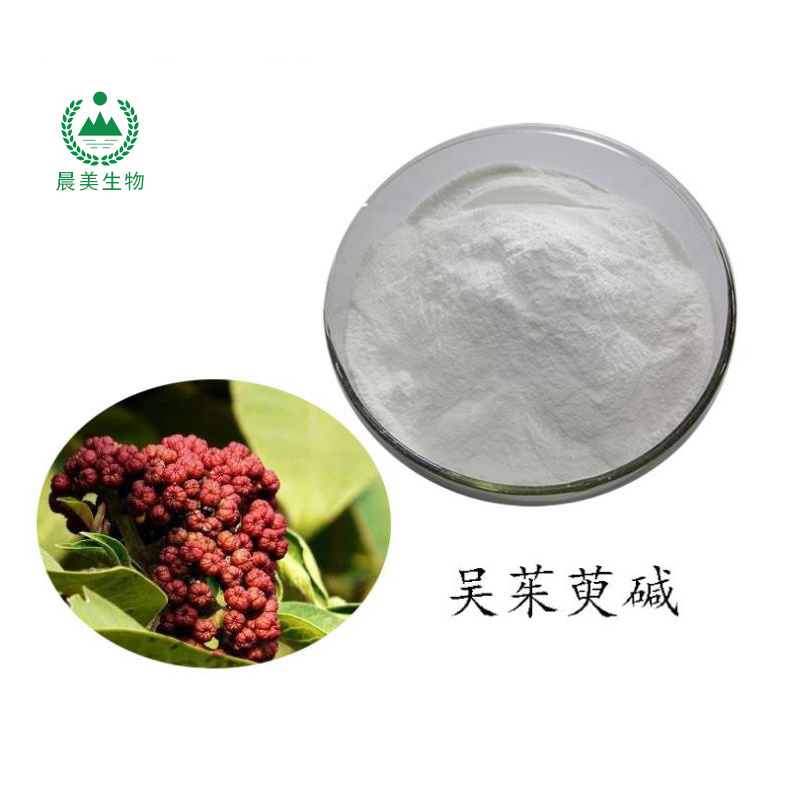
Evodiamine
classification:
Conventional products
[Product name] Evodiamine
[English name] Evodiamine
[Product alias] Wu Yu, Cha Spicy, Spicy, Stinky Spicy, Wu Pepper, Stinky Paozi
[Molecular formula] C19H17N3O
[Molecular weight] 303.35778
[CAS No.] 518-17-2
[Chemical classification] Alkaloids. Alkaloids
[Product properties] White powder
[Source] The nearly mature fruit of Evodia rutaecarpa (Juss) Benth, a Rutaceae plant
[Content] 98%
Storage: Store in a cool, dry place, away from light and high temperature.
Package: 1kg, 5kg, 25kg inner double-layer plastic bag, outer aluminum foil bag or cardboard bucket
Storage conditions: The product should be sealed and stored in a dry, cool and well-ventilated place.
Storage: cool and dry, away from light and high temperature.
Shelf life: 24 months
key:

hotline:
Evodiamine
[Product name] Evodiamine
[English name] Evodiamine
[Product alias] Wu Yu, Cha Spicy, Spicy, Stinky Spicy, Wu Pepper, Stinky Paozi
[Molecular formula] C19H17N3O
[Molecular weight] 303.35778
[CAS No.] 518-17-2
[Chemical classification] Alkaloids. Alkaloids
[Product properties] White powder
[Source] The nearly mature fruit of Evodia rutaecarpa (Juss) Benth, a Rutaceae plant
[Content] 98%
Storage: Store in a cool, dry place, away from light and high temperature.
Package: 1kg, 5kg, 25kg inner double-layer plastic bag, outer aluminum foil bag or cardboard bucket
Storage conditions: The product should be sealed and stored in a dry, cool and well-ventilated place.
Storage: cool and dry, away from light and high temperature.
Shelf life: 24 months
[English name] Evodiamine
[Product alias] Wu Yu, Cha Spicy, Spicy, Stinky Spicy, Wu Pepper, Stinky Paozi
[Molecular formula] C19H17N3O
[Molecular weight] 303.35778
[CAS No.] 518-17-2
[Chemical classification] Alkaloids. Alkaloids
[Product properties] White powder
[Source] The nearly mature fruit of Evodia rutaecarpa (Juss) Benth, a Rutaceae plant
[Content] 98%
Storage: Store in a cool, dry place, away from light and high temperature.
Package: 1kg, 5kg, 25kg inner double-layer plastic bag, outer aluminum foil bag or cardboard bucket
Storage conditions: The product should be sealed and stored in a dry, cool and well-ventilated place.
Storage: cool and dry, away from light and high temperature.
Shelf life: 24 months
Related products
Product message
website

Jiangxi Chenmei Biotechnology Co., Ltd
Address: Electronic Business Incubation Park, Wan'an County, Ji'an City, Jiangxi Province
E-mai:Info@jxchenmei.cn
Tel:0796-5838886
phone:18079659188
whatsapp




